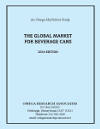The gold standard of global standards
Best practices in establishing for international industries

In today’s global marketplace, the simple question of a product’s legality may result in an answer that is anything but simple. The many differences in local legal frameworks between countries can make the issue of legality extremely complex. Confusion abounds and the cost of noncompliance can be high, both literally and figuratively. So how should a company operating internationally best manage the issues of legality and compliance?
The answer lies in global standards. With the evolution of global markets, the establishment and implementation of global standards is now more important than ever to facilitate both corporate transparency and mitigate risk. This includes international standards that address packaging hygiene (Global Packaging Standard), quality (ISO9001), environmental emissions (ISO14001), sustainability (ISO26000), fiber sourcing (FSC and PEFC), and so on.
All of these global standards have one thing in common: they provide an independent set of criteria which are also impartially verified by a certification body. This enables customers to rely on third-party certification against one set of criteria worldwide, in turn minimizing audits. Adopting a global standard, such as ISO26000 for sustainability, is one of the most effective ways of operating across multiple markets. If developed and upheld effectively, it allows the industry to self-regulate rather than becoming subject to mandatory regulation.
Nonetheless, a global standard is only as strong as the way in which it was developed. To ensure a standard’s maximum value, it is essential that the development criteria are balanced and attainable by the supply chain, while also meeting the needs of the end user. In fact, the Global Packaging Standard, launched by the British Standards Institution in 2011 to streamline food safety systems between food manufacturers and the packaging they use for their products, is an example of how a standard can be developed by an industry, successfully cover all components of the supply chain, and be effectively implemented. Following are some key elements which, while specific to research carried out on the development of the Global Packaging Standard, are applicable to the development of any effective global standard.
Creation of the principles:
• Ensure all parties in the supply chain are represented in order to provide a balanced set of criteria; this includes associations, certification bodies and auditors
• Review existing criteria in the subject area; this can be helpful for initial brainstorming
• Enlist no more than 30 people to sit on the core review committee; more becomes unmanageable
• Do, however, solicit wider consultation on the draft criteria
Content and Mechanism:
• Develop a decision tree, to assist in providing a clear pathway through the standard • Provide guidance alongside the criteria
• Ensure the review mechanism is practical, i.e. certification bodies and audits are ready and clear to verify
• Also, provide guidance for certification bodies to avoid inconsistencies
Maximizing the Implementation:
• Develop the standards in different languages
• Pilot in one market before rolling out in others
• Establish a technical advisory committee to review appeals
• Offer continued training for auditors and companies adopting the standard
• Develop a marketing plan to get the word out
• Create and maintain a database of adopters
All of these elements are also important to consider when a company evaluates the credibility of an existing global standard. If these processes are in place, then there is as much assurance as possible that the standard has been developed in a balanced way. To reinforce our own companies’ assessments across our supply chains, we must rely on credible third-party audited standards. Legality is important of course, but not manageable in isolation across borders and so, if we trust in certification bodies and third-party verification, from quality to sustainability, we can ensure businesses meet current, and hopefully future, legislation.
This isn’t to say the process is simple, as this practical example from the timber trade illustrates. However, with today’s requirements for accountability and transparency, it is increasingly necessary to make the effort. If industries don’t police themselves, they open themselves up to potentially onerous rules instituted by regulators who have a less than clear understanding of how such rules may inhibit commerce.
Dr. Elizabeth Wilks & Ian Lifshitz, Sustainability and Public Outreach for Asia Pulp & Paper
Looking for a reprint of this article?
From high-res PDFs to custom plaques, order your copy today!










